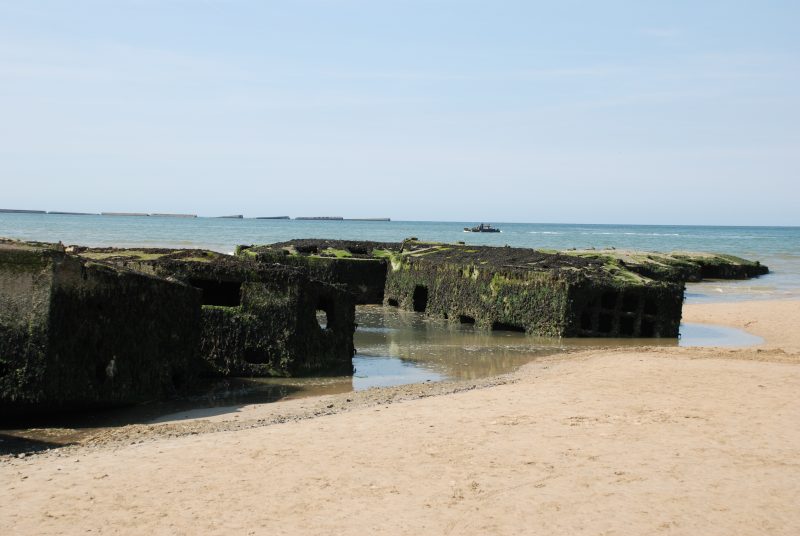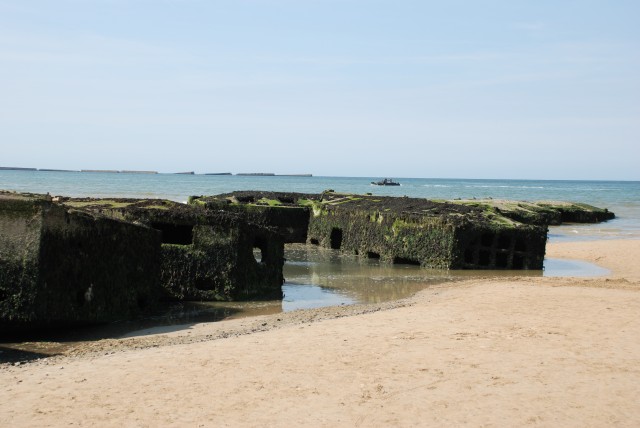The surviving concrete blocks became vital for the Allies and led them to their victory in Normandy in 1944. Now, as France prepares to commemorate 70 years since D-Day, it seems that with every storm, the remaining pieces are worn away by the sea.
Mayor of Arromanches commune, Mr Patrick Jardin insisted that if nothing is done now, in 10 years there won’t be anything left. “Of these still large caissons, we will see just a few bits at low tide,” he said.
According to Erick Leplanquais from D-Day Museum, about 115 Phoenix caissons used to form almost 8 kilometres (5 miles) of a breakwater, which provided calm waters for a 500 hectares harbour, the equivalent of 1,000 football fields.
On June 6, 1944, 130,000 soldiers landed in Normandy after crossing the English Channel. To resist the German attacks, the Western forces knew they had to keep on bringing supplies and reinforcements, but there wasn’t an Allied port on the French coast. Therefore, they decided to solve the problem by building the pieces of the harbour and England and have them shipped to France, where they would be assembled. Over 250 trawlers were engaged in the transportation of the parts which formed the Mulberry harbour, the MY Sinchew.com reports.
The work on the harbour began on June 8, 1944 and was ready by June 14. 70 years later, the remains of the Mulbery harbour are wearing away. Director of the D-Day Museum, Mr Frederic Sommier said there are only 20 caissons visible now and that every year, at least one gets lost into the sea. Mayor Patrick Jardin suggested stopping the waves from crashing against the caissons, by building a barrier. That, however, would cost him millions of euros, money that could never be raised by the 600 inhabitants of the commune.
About 4.8 million euros have been invested in 2010 by the American Battle Monuments to protect and conserve the Pointe du Hoc, a cliff above the English Channel, located at about 30 kilometres from the harbour.
Mayor Jardin doesn’t believe a ministry would get involved in solving this problem, saying that it would probably take a long time before a solution will be found for the preservation of the caissons.
A request for heritage protection status has been sent to the French government in December last year for France to transmit the application to the UN cultural agency UNESCO before the commemorations of the D-Day landings begin in June this year.

